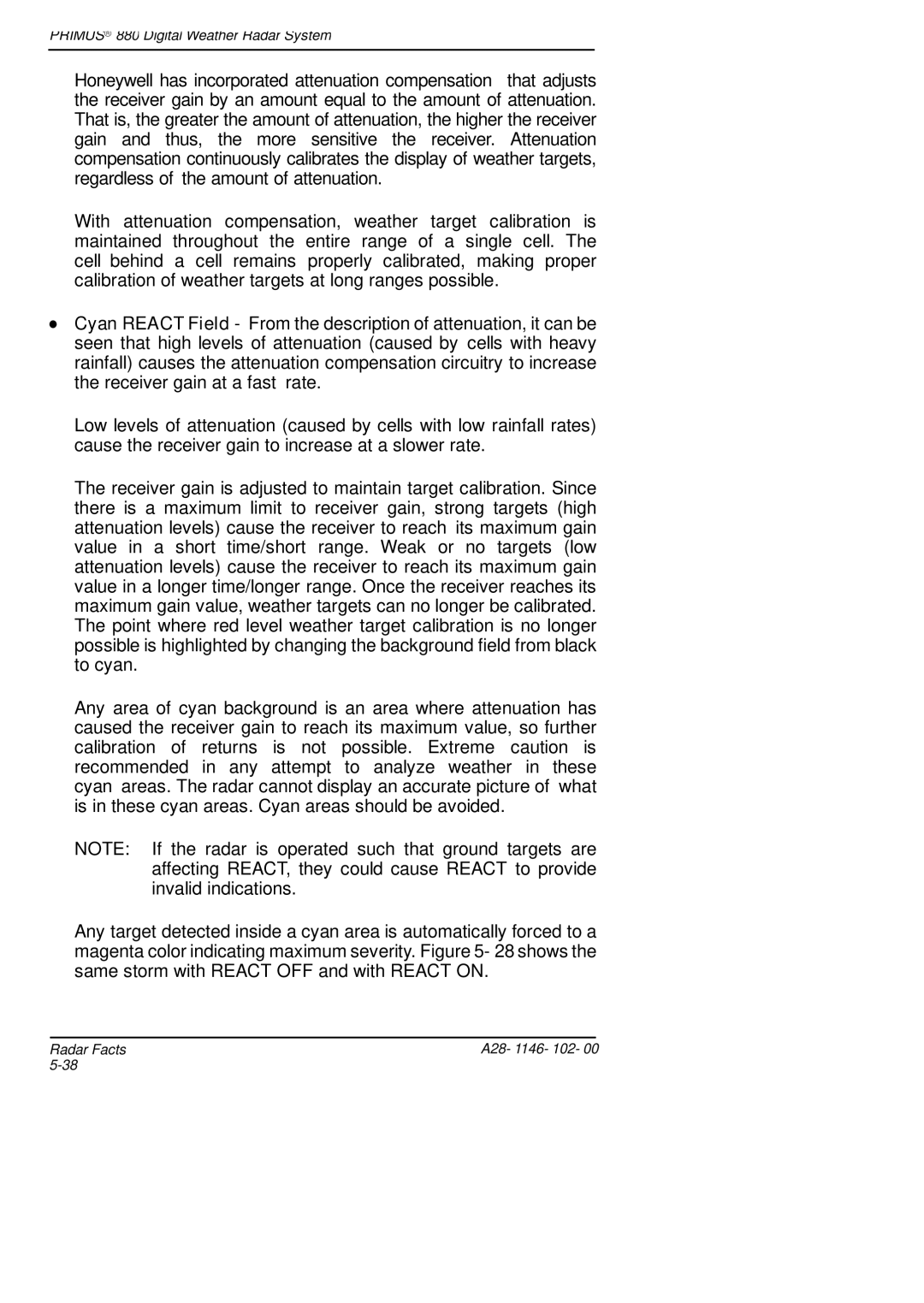
PRIMUSr 880 Digital Weather Radar System
Honeywell has incorporated attenuation compensation that adjusts the receiver gain by an amount equal to the amount of attenuation. That is, the greater the amount of attenuation, the higher the receiver gain and thus, the more sensitive the receiver. Attenuation compensation continuously calibrates the display of weather targets, regardless of the amount of attenuation.
With attenuation compensation, weather target calibration is maintained throughout the entire range of a single cell. The cell behind a cell remains properly calibrated, making proper calibration of weather targets at long ranges possible.
DCyan REACT Field - From the description of attenuation, it can be seen that high levels of attenuation (caused by cells with heavy rainfall) causes the attenuation compensation circuitry to increase the receiver gain at a fast rate.
Low levels of attenuation (caused by cells with low rainfall rates) cause the receiver gain to increase at a slower rate.
The receiver gain is adjusted to maintain target calibration. Since there is a maximum limit to receiver gain, strong targets (high attenuation levels) cause the receiver to reach its maximum gain value in a short time/short range. Weak or no targets (low attenuation levels) cause the receiver to reach its maximum gain value in a longer time/longer range. Once the receiver reaches its maximum gain value, weather targets can no longer be calibrated. The point where red level weather target calibration is no longer possible is highlighted by changing the background field from black to cyan.
Any area of cyan background is an area where attenuation has caused the receiver gain to reach its maximum value, so further calibration of returns is not possible. Extreme caution is recommended in any attempt to analyze weather in these cyan areas. The radar cannot display an accurate picture of what is in these cyan areas. Cyan areas should be avoided.
NOTE: If the radar is operated such that ground targets are affecting REACT, they could cause REACT to provide invalid indications.
Any target detected inside a cyan area is automatically forced to a magenta color indicating maximum severity. Figure 5- 28 shows the same storm with REACT OFF and with REACT ON.
Radar Facts | A28- 1146- 102- 00 |
|
